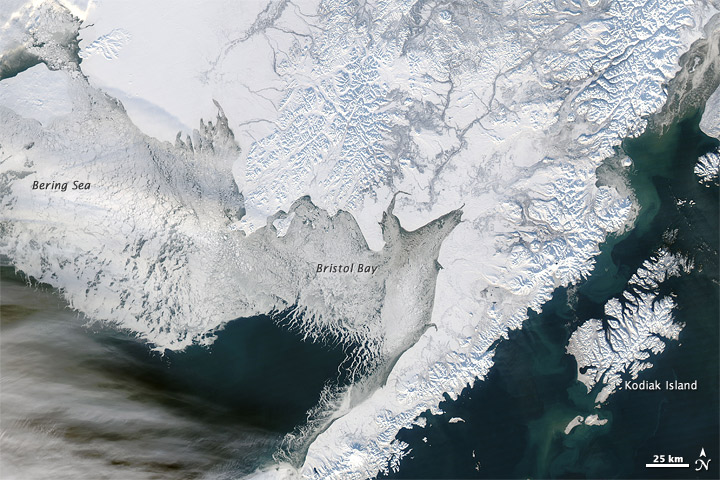Bering Sea ice came in quickly this year and is at its largest extent since the 1970s.
It has effectively shut down the snow crab fishery, causing problems for boats as far south as the Aleutians. But some scientists say that while it’s a pain in the short term, the ice is good for the Bering Sea’s valuable fisheries in the long run.
When this winter started, the ice extent in the Bering Sea was looking pretty average, but in the past couple of weeks, that’s changed – the ice is now covering an area roughly the size of Texas. Andy Mahoney, a sea ice researcher at the University of Alaska Fairbanks, says the thirty-year average is about a third less than that – covering an area more like California. Part of the reason for the increase is a persistent low-pressure system in the Arctic.
“And that creates a situation where the cold air doesn’t leave the Arctic as frequently and as a result, if the cold air stays in the Arctic, the Arctic stays colder.”
But in other northern waters, the sea ice extent is shrinking. National Oceanic and Atmospheric Administration climate scientist Jim Overland says the Bering Sea frequently doesn’t track with the rest of the Arctic. As average Arctic ice extents have gone down over the last 30 years, the Bering Sea has actually seen a slight increase. Overland says that’s because despite climate change, the Bering Sea ice is mostly dictated by storms.
“The Bering Sea continues to do its own thing, this year and in the foreseeable future and that’s based on how the North Pacific storm tracks behave.”
Since 2006, the Bering Sea has been in a cold phase. But before that, from 2000 to 2005, the Bering Sea was at the other extreme – record warm temperatures. According to Overland, these blocs of temperature are don’t represent any pattern – and they can have a huge impact on the ocean ecosystem.
“You have this random climate extreme and it’s like a hammer hitting the bell. You just strike the bell a couple of times with the hammer and then you stop the hammer but the bell can continue to ring. So the biology would be the continuing effect of the shorter, random events.”
Back in the 1970s there was a period of temperatures as cool as the current ones that Overland says caused a major reorganization of the Bering Sea ecosystem.
“The fact that pollock now dominates after the 1970s…perhaps the loss of cod in the 1930s was also related to one of these five year events.
But Overland is less sure what this period of cooler temperatures could mean for ocean ecosystems, especially give the stretch of warmer weather at the beginning of the millennium.
“If we had continued to have a whole decade of warm temperatures we might have precipitated some major extent in the ecosystem, but I think the fact that we’ve have four cold years, we’ve returned back to where we were in the 1980s and 90s.”
Alaska Fisheries Science Center biologist Kerim Aydin agrees that the annual ice extent has a big impact on fish populations, but is cautious about this year’s effects.
“It’s not so much about how much the ice covers at this time of year, but how fast it melts back into the spring and summer.”
Aydin says the biggest impact is on pollock – southwest Alaska’s biggest fishery – but also snow crab. He says consensus is emerging in the scientific community around the idea that colder springtime temperatures are better for pollock stocks because of how they affect plankton growth.
But he says it’s still unclear whether this year will be one of those years.
“Not so much the past few, but there have been years in the past where we’ve seen very cold winters, but then things have warmed up pretty quickly.”
The ice extent is expected to remain high for at least another month.





